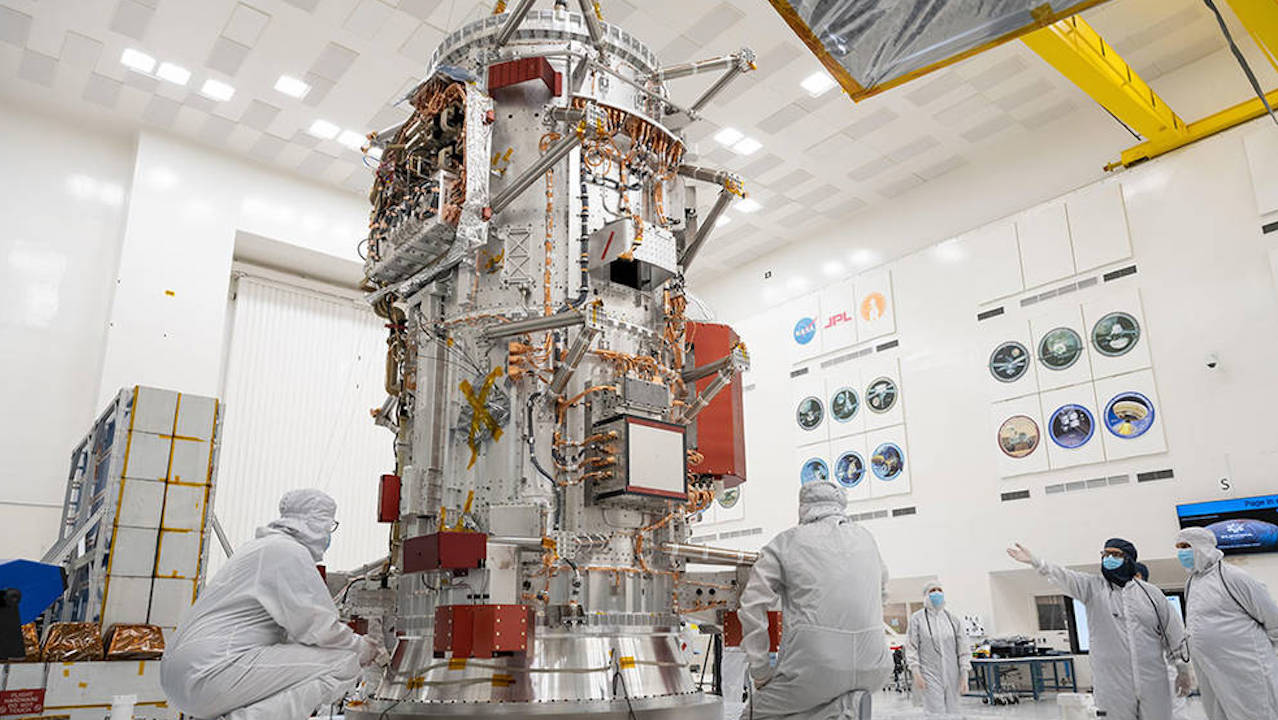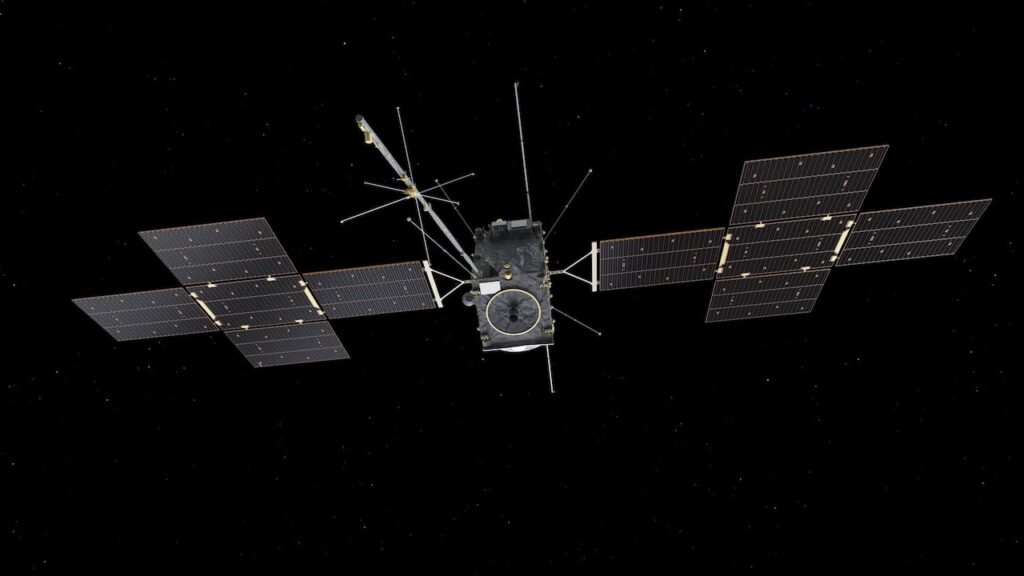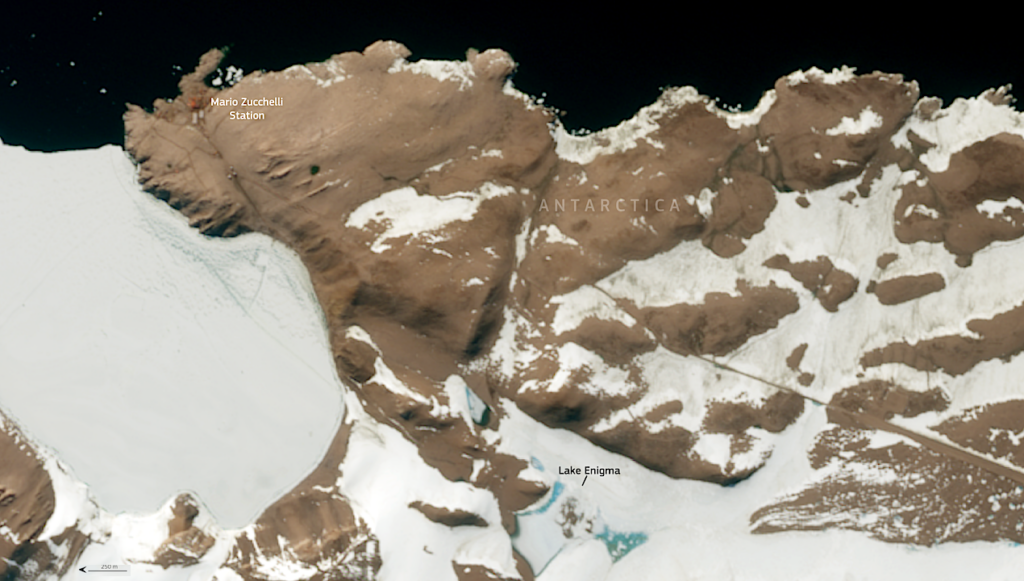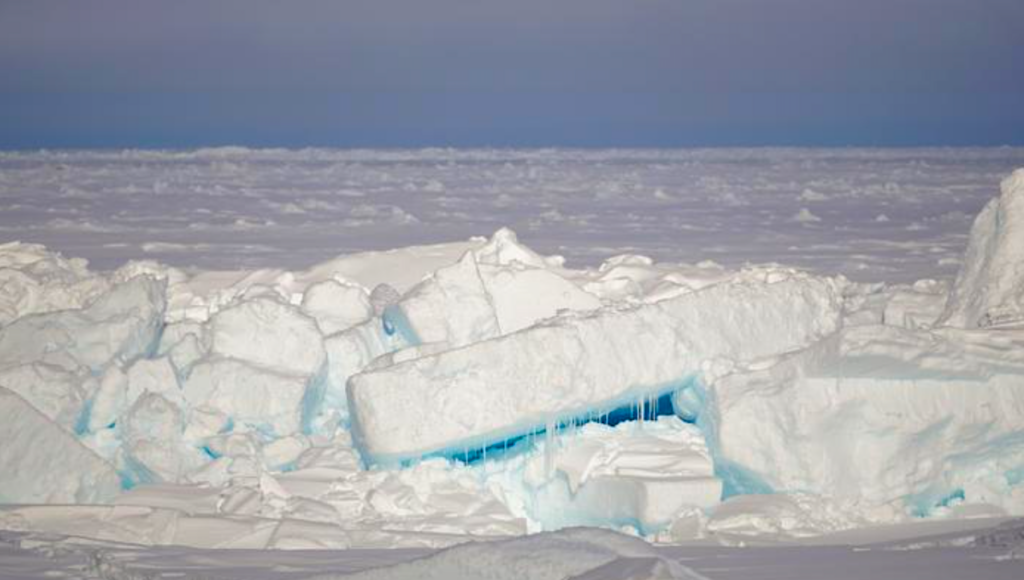A New Video Series Documents The Europa Clipper Astrobiology Mission

Destined for Jupiter’s icy moon Europa, the Europa Clipper spacecraft – the largest NASA has ever flown on an interplanetary mission – is being readied to launch in October 2024.
Between now and then, thousands of hours of work will go into assembling and testing the spacecraft to ensure it’s hardy enough to survive a six-year 1.6-billion-mile (2.6 billion kilometer) journey and sophisticated enough to perform a detailed science investigation of this mysterious moon.
The new video series “Spacecraft Makers: Europa Clipper” offers quick updates on the mission’s progress and lifts the curtain on the exacting work that goes into making sure the spacecraft reaches the Jupiter system in 2030. Europa Clipper aims to help answer questions about the ocean that scientists strongly believe lies below Europa’s icy crust.
The spacecraft will fly by the moon about 50 times while orbiting Jupiter. (It can’t orbit Europa because doing so would bring Europa Clipper too close to the gas giant’s brutal radiation belts. Learn more in the video.) On each flyby, a suite of science instruments will gather data on the depth of the subsurface ocean, the thickness of the ice crust, and, potentially, the characteristics of any plumes that may be venting subsurface water into space. The goal is to find out whether Europa has the potential to support life.
The series’ premiere episode features Europa Clipper Project Manager Jordan Evans, who also has worked on NASA’s Curiosity Mars rover and the agency’s Hubble Space Telescope. In the video, he joins Deputy Science Manager Trina Ray, who worked on NASA’s Cassini and Galileo missions. They venture into JPL’s storied High Bay 1 clean room, where Europa Clipper is under construction – and where all of NASA’s Mars rovers, the twin Voyager spacecraft, and other historic spacecraft were assembled.
While you’re digging into the nuts and bolts of the spacecraft, check out a 24-hour live feed of assembly in progress in High Bay 1.
Additional episodes of “Spacecraft Makers” will include more activity inside other clean rooms where components of Europa Clipper are coming together. Future seasons of the series will cover other missions under construction at JPL.
More About the Mission
Europa Clipper’s main science goal is to determine whether there are places below the surface of Jupiter’s icy moon, Europa, that could support life. The mission’s three main science objectives are to understand the nature of the ice shell and the ocean beneath it, along with the moon’s composition and geology. The mission’s detailed exploration of Europa will help scientists better understand the astrobiological potential for habitable worlds beyond our planet.
Managed by Caltech in Pasadena, California, JPL leads the development of the Europa Clipper mission in partnership with the Johns Hopkins Applied Physics Laboratory (APL) in Laurel, Maryland, for NASA’s Science Mission Directorate in Washington. APL designed the main spacecraft body in collaboration with JPL and NASA’s Goddard Space Flight Center in Greenbelt, Maryland. The Planetary Missions Program Office at NASA’s Marshall Space Flight Center in Huntsville, Alabama, executes program management of the Europa Clipper mission.
More information about Europa can be found here: europa.nasa.gov
Astrobiology







